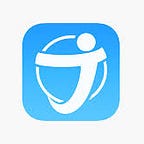There are a few exercises that are beneficial from both a functional perspective as well as an assessment standpoint. The deep squat is one such exercise. To be able to perform it or not perform it correctly is indicative of someones overall quality of movement. When an individual has difficulty performing a bodyweight deep squat, avoid loading the body with heavy back squats would be prudent.
This exercise can also tell you if there is any asymmetry throughout the body, meaning muscle imbalance, or mobility issues between the right and left sides of the body.
Squats at any depth are beneficial because they activate many different muscles since it’s a compound movement. Someones form and technique will depends on mobility, flexibility, range of motion, strength and training goals. Let’s look at why this exercise is in fact so valuable?
Four Benefits of Performing a Deep Squat
- More than Just a Leg Workout — Starting with the ankle joint and moving up through the legs, hips, core, back and shoulders. The muscles and connective tissue for each of these areas gets stressed and overloaded during the movement.
- Better Knee Stability — Years ago some though going below parallel would harm the knee joint; the opposite is actually true, lower is better. The end position actually strengthens the ligaments and improves stability in the knee.
- Hips Lower than Knees is a Good Thing — Dropping into a deep squat overloads the gluteus maximus and hip extensors more than a traditional squat would.
- Decreased Forces in Knee — While in a deep squat the forces acting on the knee ligaments are less because the knee is more stable in that position.
The Overhead Deep Squat Can Double as a Functional Assessment Tool
Many of the well-known movement experts like Gray Cook, MSPT, recommend using a bodyweight overhead deep squat as an assessment tool. He and many others use it along with four other exercises as part of their functional movement screening assessment. This one exercise turned into an assessment tool can gauge “bilateral symmetrical mobility of the hips, knees, and ankles.” When it’s combined with the hands held overhead, the test will also assess “bilateral symmetrical mobility of the shoulders, as well as extension of the thoracic spine,” according to Cook.
Movement Execution
- Position the feet shoulder width apart, keeping both feet pointed straight (don’t angle your feet out at all).
- Raise the shoulders overhead, flexing and abducting the shoulders keeping the elbows fully extended.
- Slowly lower the body as deep as possible into a squat.
- Make sure hand position and length does not change during the movement.
The author is being tested (pictured above) to look at hip mobility issues during an overhead deep squat. This was my first attempt. Two issues were corrected on subsequent attempts. Can you see my two mistakes? I’m using too much external rotation in the hips that results in a “flared” angle seen in both of my feet. My feet should be straight. Next, I’m too rounded in my low back (lumbar spine). This is lumbar flexion and I need more lumbar extension. A few good points to look at though — adequate ankle dorsiflexion as well as lumbar extension and shoulder flexion. This is why a picture or video is so helpful.
The goals are to determine if there is any pain during the movement. Where was the pain coming from? Could the movement be executed fully? If possible, have a picture taken of you or the person you’re working with from straight on and from a side angle too. Gray Cook notes, “the ability to perform the test requires closed-chain dorsiflexion of the ankles, flexion of the hips and knees, extension of the thoracic spine, and flexion and abduction of the shoulders.”
Like all great exercise assessment tools there are various progressions dedicated to the overhead deep squat that can be found in Cook’s book Athletic Body in Balance if needed. Hopefully, this article shed some light on the many benefits of the deep squat, both as an exercise and assessment tool. Stay Strong!
Recommended Reading
Cook, G., Athletic Body in Balance, Human Kinetics, 2003.
Boyle, M., Advances in Functional Training, On Target Publications, 2010.
Cook, G., Movement: Functional Movement Systems, On Target Publishing, 2010.
Originally published at https://www.jefit.com on September 23, 2020.
